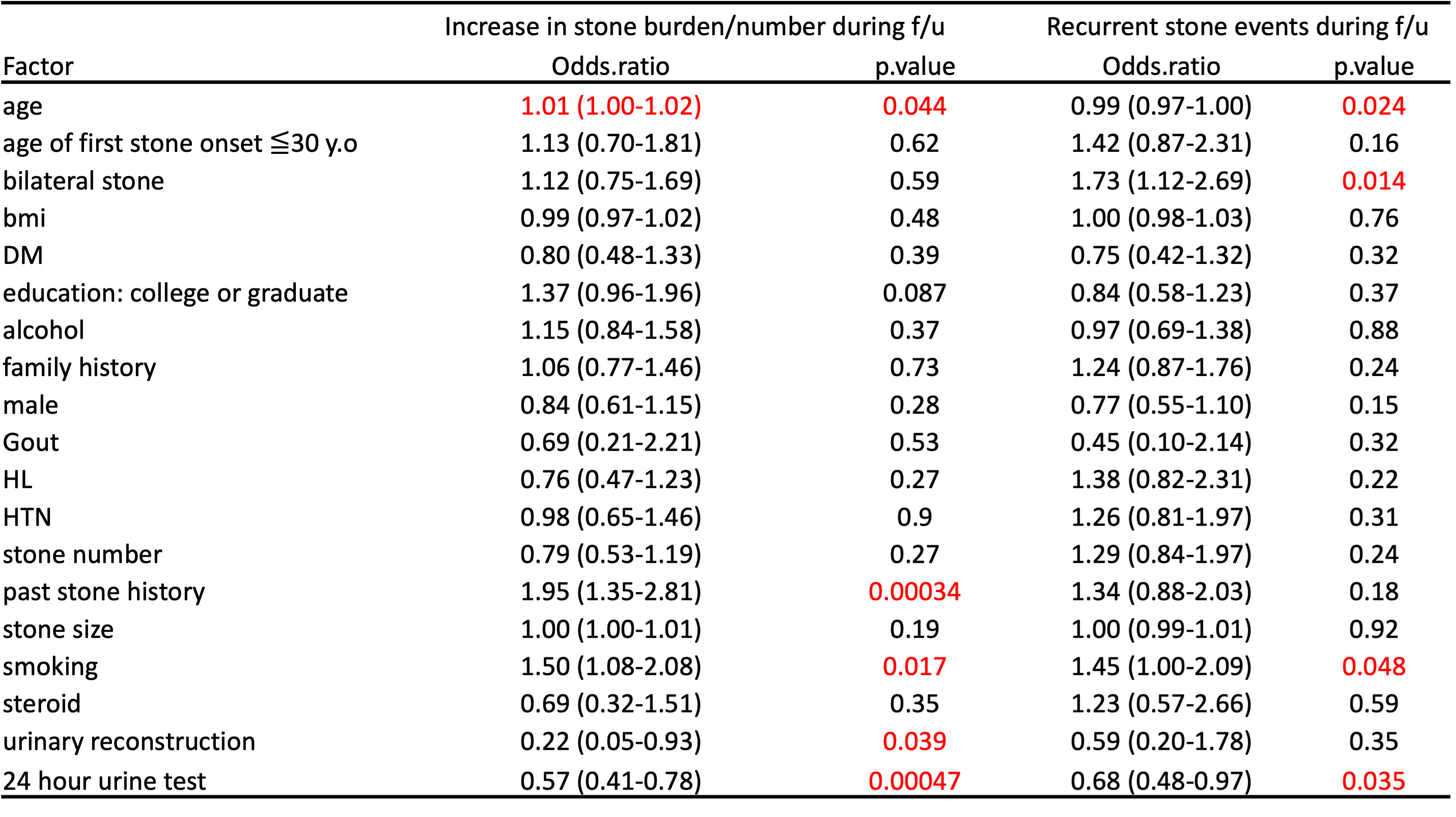Back
Poster, Podium & Video Sessions
Moderated Poster
MP26: Stone Disease: Epidemiology & Evaluation I
MP26-03: 24-hour urine test contributes to the decreased risk of recurrent stone events
Saturday, May 14, 2022
10:30 AM – 11:45 AM
Location: Room 225
Rei Unno*, Xavier Cortez, Leslie Charondo, Kevin Chang, Nizar Hakam, Carter Chan, Heiko Yang, Gregory Hosier, Fadl Hamouche, David Bayne, Marshall Stoller, Thomas Chi, San Francisco, CA
- RU
Rei Unno, MD, PHD
University of California, San Francisco, Department of Urology
Poster Presenter(s)
Introduction: Although the AUA guideline recommends metabolic testing in first-time stone formers with high-risks and recurrent stone formers, this is not often followed in real world practice. This study aimed to understand the characteristics of patients undergoing 24-hour (24h) urine testing, as well as the direct impact of the metabolic testing on the changes in stone burden/number and recurrent stone events during follow-up.
Methods: This was an analysis of prospectively collected data from the Registry for Stones of the Kidney and Ureter (ReSKU) from a single institution between October 2015 and May 2021. We compared demographics and clinical information between individuals with a 24h urine test and those without a test. We also collected data on changes in stone burden/number and stone events during the period from the initial clinic visit to the next clinic visit. Univariate and multivariate logistic regression analyses were performed to identify the factors associated with the clinical severity of urolithiasis.
Results: Of 1921 patients analyzed, 564 patients (29.3%) underwent a 24h urine test. Patients who agreed to perform a 24h urine test were more often highly educated, non-smokers, and had hyperlipidemia (HL), a past stone history and a positive family history of urolithiasis. They also were more likely to present with a higher stone burden and bilateral stones. Over a median follow-up period of 5 months, those with a 24h urine testing were less likely to have an increase their stone burden and number on imaging and experience stone events than those without a 24h urine test. On multivariate analysis, undergoing a 24h urine test remained a statistically significant factor decreasing the risks of an increase in stone burden and number and recurrent stone events (OR 0.57 p<0.001, OR 0.68 p=0.035, respectively) (Table1).
Conclusions: Consistent with the AUA guidelines, when metabolic testing was performed in patients with high-risk for stone recurrence these patients experienced fewer recurrent stone events. These data support that metabolic testing should be performed more frequently in patients with first time kidney stones.
Source of Funding: none

Methods: This was an analysis of prospectively collected data from the Registry for Stones of the Kidney and Ureter (ReSKU) from a single institution between October 2015 and May 2021. We compared demographics and clinical information between individuals with a 24h urine test and those without a test. We also collected data on changes in stone burden/number and stone events during the period from the initial clinic visit to the next clinic visit. Univariate and multivariate logistic regression analyses were performed to identify the factors associated with the clinical severity of urolithiasis.
Results: Of 1921 patients analyzed, 564 patients (29.3%) underwent a 24h urine test. Patients who agreed to perform a 24h urine test were more often highly educated, non-smokers, and had hyperlipidemia (HL), a past stone history and a positive family history of urolithiasis. They also were more likely to present with a higher stone burden and bilateral stones. Over a median follow-up period of 5 months, those with a 24h urine testing were less likely to have an increase their stone burden and number on imaging and experience stone events than those without a 24h urine test. On multivariate analysis, undergoing a 24h urine test remained a statistically significant factor decreasing the risks of an increase in stone burden and number and recurrent stone events (OR 0.57 p<0.001, OR 0.68 p=0.035, respectively) (Table1).
Conclusions: Consistent with the AUA guidelines, when metabolic testing was performed in patients with high-risk for stone recurrence these patients experienced fewer recurrent stone events. These data support that metabolic testing should be performed more frequently in patients with first time kidney stones.
Source of Funding: none


.jpg)
.jpg)